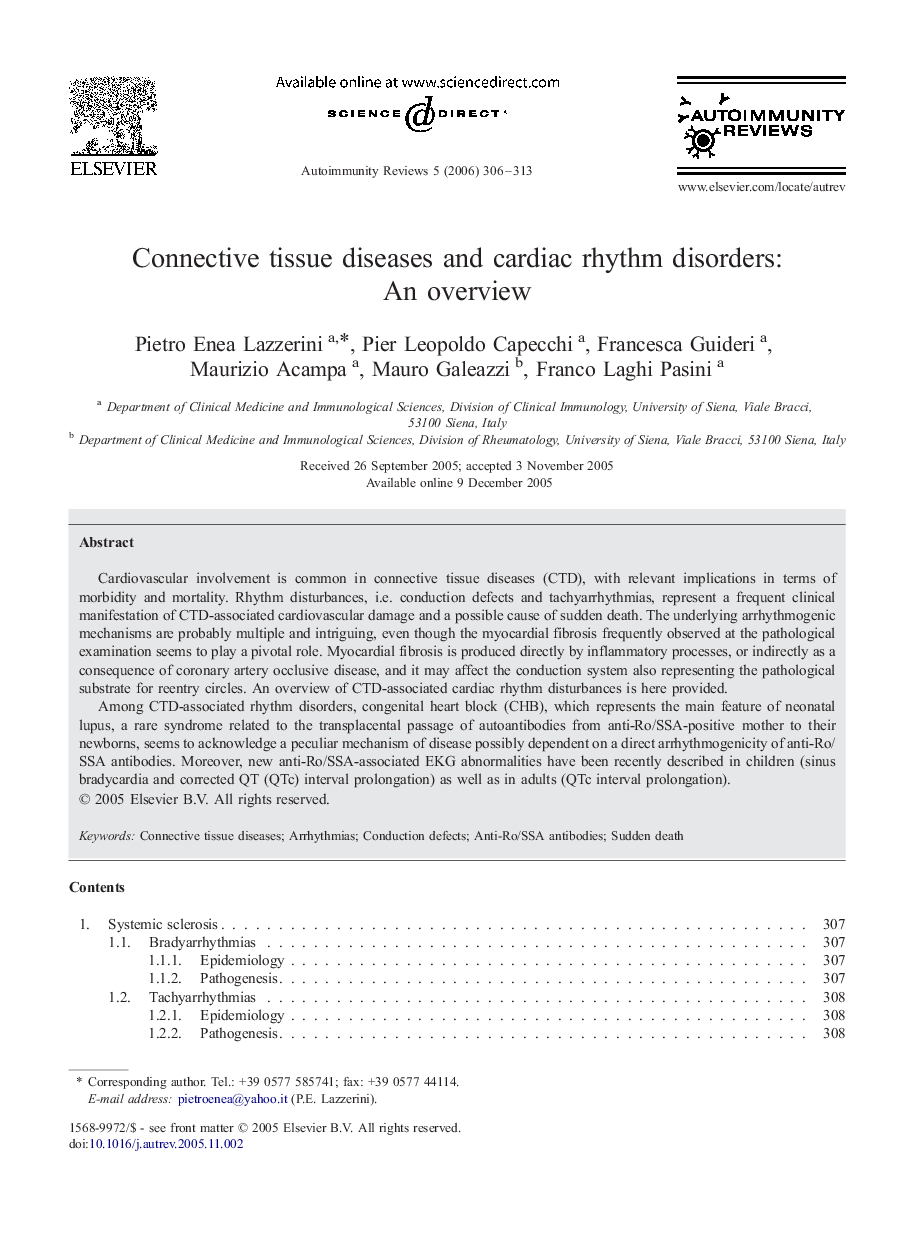| Article ID | Journal | Published Year | Pages | File Type |
|---|---|---|---|---|
| 3342692 | Autoimmunity Reviews | 2006 | 8 Pages |
Cardiovascular involvement is common in connective tissue diseases (CTD), with relevant implications in terms of morbidity and mortality. Rhythm disturbances, i.e. conduction defects and tachyarrhythmias, represent a frequent clinical manifestation of CTD-associated cardiovascular damage and a possible cause of sudden death. The underlying arrhythmogenic mechanisms are probably multiple and intriguing, even though the myocardial fibrosis frequently observed at the pathological examination seems to play a pivotal role. Myocardial fibrosis is produced directly by inflammatory processes, or indirectly as a consequence of coronary artery occlusive disease, and it may affect the conduction system also representing the pathological substrate for reentry circles. An overview of CTD-associated cardiac rhythm disturbances is here provided.Among CTD-associated rhythm disorders, congenital heart block (CHB), which represents the main feature of neonatal lupus, a rare syndrome related to the transplacental passage of autoantibodies from anti-Ro/SSA-positive mother to their newborns, seems to acknowledge a peculiar mechanism of disease possibly dependent on a direct arrhythmogenicity of anti-Ro/SSA antibodies. Moreover, new anti-Ro/SSA-associated EKG abnormalities have been recently described in children (sinus bradycardia and corrected QT (QTc) interval prolongation) as well as in adults (QTc interval prolongation).
